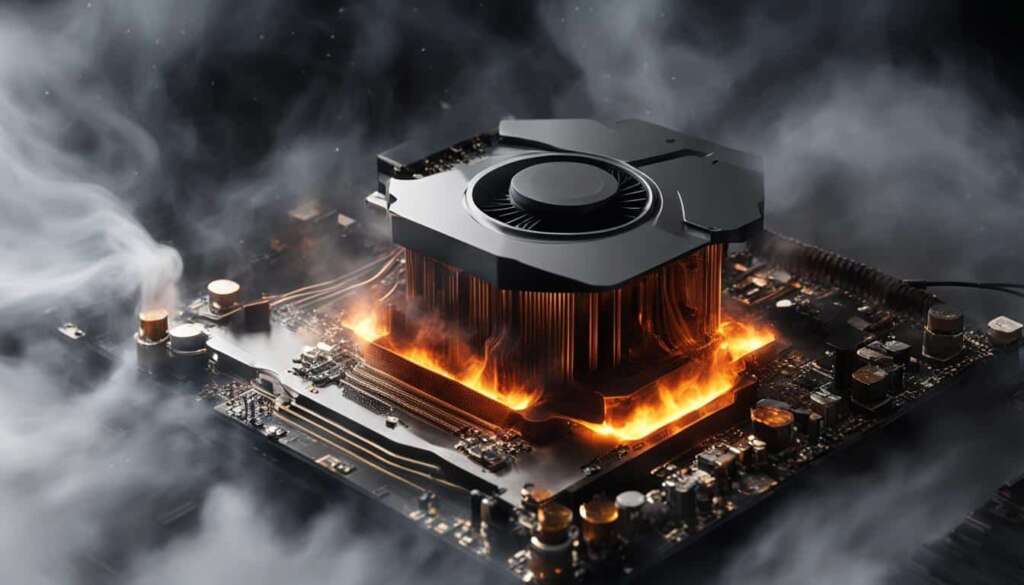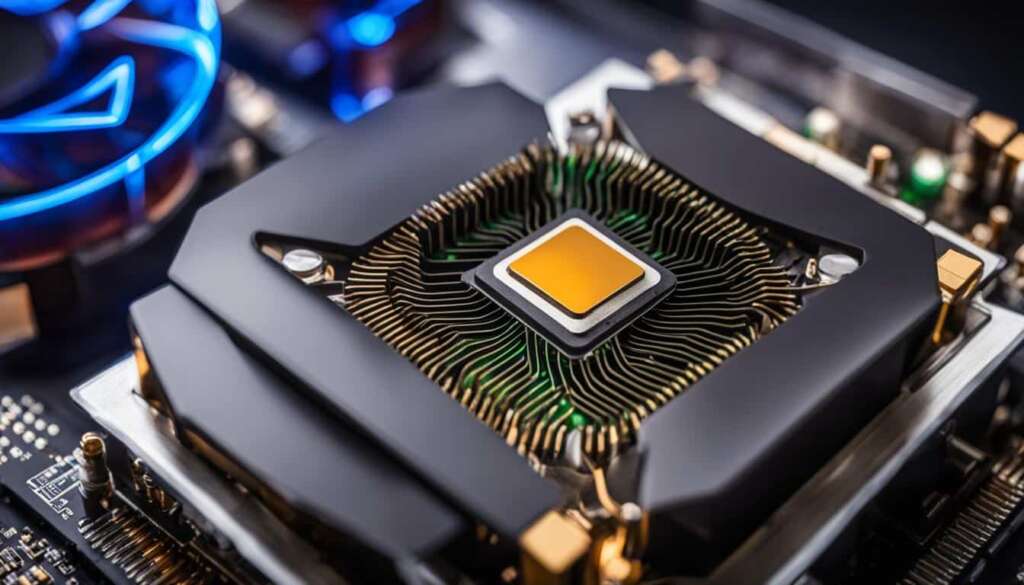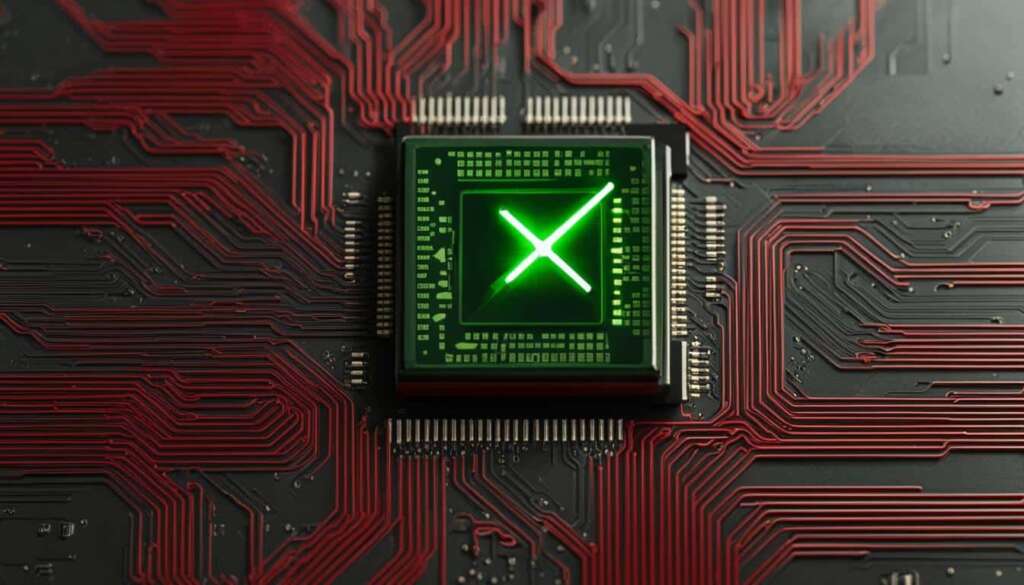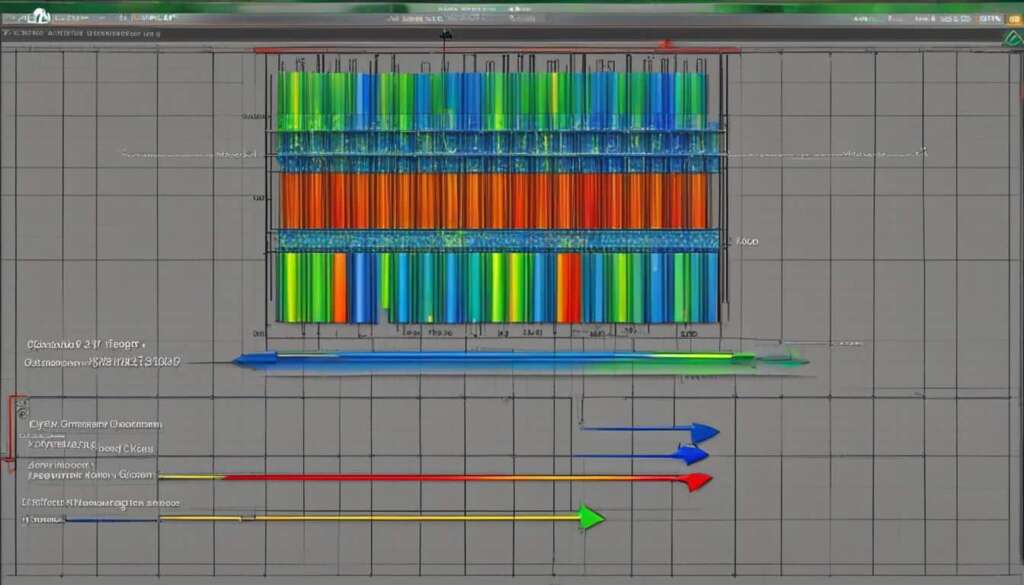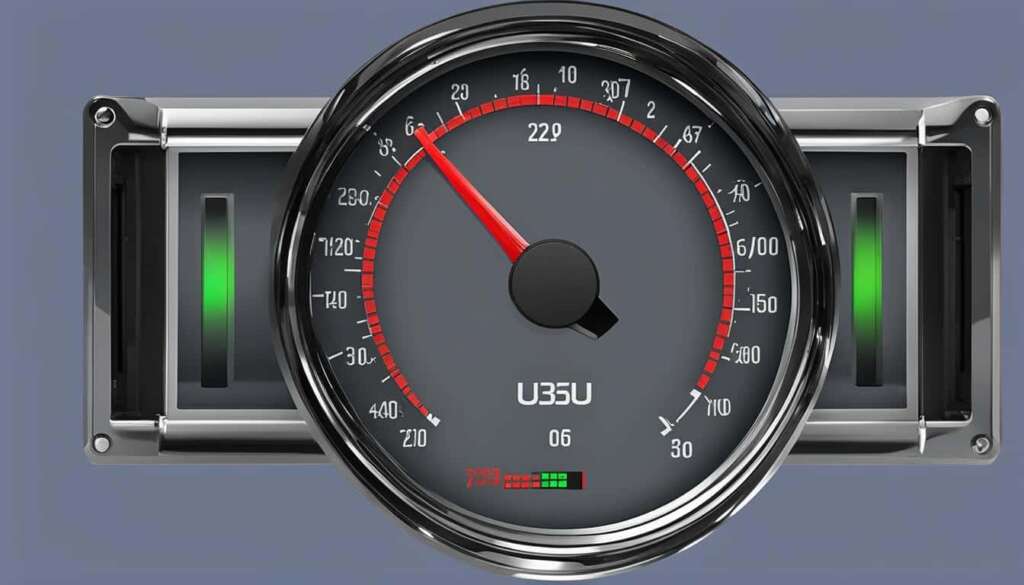Table of Contents
Overheating of the CPU can lead to various issues such as slowdowns, crashes, and even permanent damage to the hardware. By implementing the following tips and fixes, you can prevent CPU overheating and ensure optimal computer performance.
Key Takeaways
- Preventing CPU overheating is crucial for maintaining computer performance.
- Overheating can cause slowdowns, crashes, and permanent damage to the hardware.
- Implementing tips and fixes such as improving airflow and checking fans can help prevent CPU overheating.
- Managing CPU usage and updating software are also effective in preventing overheating.
- Regularly cleaning your PC and monitoring CPU temperature are essential for detecting any signs of overheating.
Continue reading the article to learn more about the signs of CPU overheating, causes, improving airflow and checking fans, the importance of thermal paste and CPU heatsink, managing CPU usage, and updating software to prevent CPU overheating and maintain optimal computer performance.
Signs of CPU Overheating and Causes
It’s important to be aware of the signs of CPU overheating and understand the causes behind it. By recognizing the symptoms and addressing the root causes, you can effectively prevent potential damage to your computer system. Here are some common signs of CPU overheating:
- Hot computer: One of the first indicators of CPU overheating is a visibly hot computer. If you notice that your computer feels unusually warm to the touch, it could be a sign that the CPU is overheating.
- Loud fan noise: Another sign of CPU overheating is the sound of your computer’s fans operating at maximum speed. When the CPU is running hot, the fans have to work harder to cool it down, resulting in increased noise levels.
- Slowdowns or crashes during high-intensity usage: If your computer experiences frequent slowdowns, freezes, or crashes while running demanding applications or performing high-intensity tasks, it could be an indication of CPU overheating. The excessive heat can cause the CPU to throttle its performance to protect itself from further damage.
CPU overheating can be caused by various factors. Understanding these causes can help you take preventive measures to maintain optimal CPU temperatures. Some common causes of CPU overheating include:
- Demanding applications: Running resource-intensive applications, such as video editing software or advanced gaming applications, can put a significant strain on the CPU, leading to increased heat generation.
- Multiple open browser tabs: Having numerous browser tabs open simultaneously consumes CPU resources and generates additional heat. It’s important to close unnecessary tabs to reduce the CPU workload.
- Defective fans: Malfunctioning or defective fans can fail to effectively dissipate heat from the CPU. This can result in inadequate cooling and eventually lead to overheating.
- Blocked air vents: Accumulated dust or obstructions in the air vents can restrict airflow inside the computer case, preventing proper cooling. It’s crucial to regularly clean the air vents to maintain adequate airflow.
- Outdated software: Using outdated operating systems or running outdated software can cause increased CPU usage, leading to overheating. It’s important to keep your software up to date to ensure optimal performance and minimize potential heat generation.
- Direct sunlight: Exposing your computer to direct sunlight or placing it near a heat source can significantly raise its temperature, contributing to CPU overheating. It’s advisable to keep your computer in a cool and shaded area.
By being attentive to the signs of CPU overheating and addressing the underlying causes, you can prevent potential damage to your computer system and ensure optimal performance. In the next section, we will explore practical strategies for improving airflow and checking fans to prevent CPU overheating.
| Signs of CPU Overheating | Causes of CPU Overheating |
|---|---|
| Hot computer | Demanding applications |
| Loud fan noise | Multiple open browser tabs |
| Slowdowns or crashes during high-intensity usage | Defective fans |
| Blocked air vents | |
| Outdated software | |
| Direct sunlight |
By understanding the signs and causes of CPU overheating, you can take proactive steps to prevent this common issue. In the next section, we will discuss how to improve airflow and check fans to enhance CPU cooling.
Quotes
“Recognizing the signs of CPU overheating and addressing the root causes can prevent potential damage to your computer system and ensure optimal performance.” – Tech Expert
Improving Airflow and Checking Fans
One of the key factors in preventing CPU overheating is improving airflow within your computer system. Adequate airflow helps dissipate heat efficiently, keeping your CPU cool and ensuring optimal performance. Here are some essential tips to improve airflow and check your fans for maximum computer ventilation and CPU cooling:
- Locate your PC in a well-ventilated area: Place your computer in a room with good air circulation. Avoid confining it in tight spaces or near heat sources such as radiators or direct sunlight. A well-ventilated environment allows for better heat dissipation.
- Keep the case closed: Ensure that the computer case is properly closed during operation. Open cases can disrupt the airflow pattern and create hotspots, leading to CPU overheating. If your system has a side panel fan, make sure it is securely in place.
- Remove obstructions from the case: Check the top of your computer case and remove any items blocking the exhaust vents. Objects like books, papers, or other devices can impede the airflow and trap heat inside.
- Organize cables: Proper cable management plays a crucial role in optimizing airflow. Ensure cables are neatly routed and secured using cable ties or Velcro straps. This prevents tangled cables from obstructing the airflow path.
- Add more case fans: Consider installing additional case fans if your system lacks adequate cooling. Fans positioned strategically can help direct airflow across critical components, including the CPU. Intake fans draw cool air into the case, while exhaust fans expel hot air.
- Clean the intake and exhaust paths: Over time, dust and debris can accumulate on the intake and exhaust vents, obstructing airflow. Regularly clean these areas using compressed air or an anti-static brush to remove any buildup and ensure unimpeded cooling.
- Check your fans: Faulty or blocked fans can significantly contribute to CPU overheating. Inspect all fans within your system, including the CPU fan, case fans, and graphics card fans. Clear any dust or debris that may have accumulated on the fan blades or surrounding areas. Ensure fans are properly connected and functioning.
By improving airflow and regularly checking your fans, you can create an optimal cooling environment for your CPU. This helps maintain stable temperatures and prevents the risk of overheating, ensuring smooth and efficient operation of your computer system.
Thermal Paste and CPU Heatsink
The thermal paste and CPU heatsink are crucial components in maintaining optimal CPU cooling. It is essential to ensure that the CPU heatsink is properly seated and securely fastened to the CPU.
Thermal paste, also known as thermal compound, is applied between the CPU and the heatsink to enhance heat transfer. Over time, the thermal paste may dry up or become less effective, hindering heat dissipation. Reapplying thermal paste can significantly improve CPU cooling performance.
However, it is important to note that the task of reapplying thermal paste should only be undertaken by experienced users or professionals. Mishandling or improper application of thermal paste can lead to further damage or ineffective cooling.
Checking the Heatsink
Before reapplying thermal paste, it is crucial to inspect the CPU heatsink for any signs of damage or looseness. A loose heatsink can compromise cooling efficiency and cause overheating. Make sure the heatsink is properly seated and tightly secured to the CPU socket.
Reapplying Thermal Paste
When reapplying thermal paste, follow these steps:
- Gently clean the old thermal paste from the CPU heatsink and CPU using isopropyl alcohol and a lint-free cloth. Ensure that both surfaces are thoroughly cleaned.
- Apply a small amount of thermal paste on the center of the CPU. The size of a grain of rice is usually sufficient.
- Spread the thermal paste evenly across the CPU surface using a plastic card or dedicated thermal paste spreading tool.
- Securely reattach the CPU heatsink, making sure it is properly aligned and tightly fastened.
Remember to refer to the manufacturer’s instructions or consult a professional if you are unsure about the reapplication process.
By checking the CPU heatsink and reapplying thermal paste when necessary, you can significantly improve CPU cooling and prevent overheating.
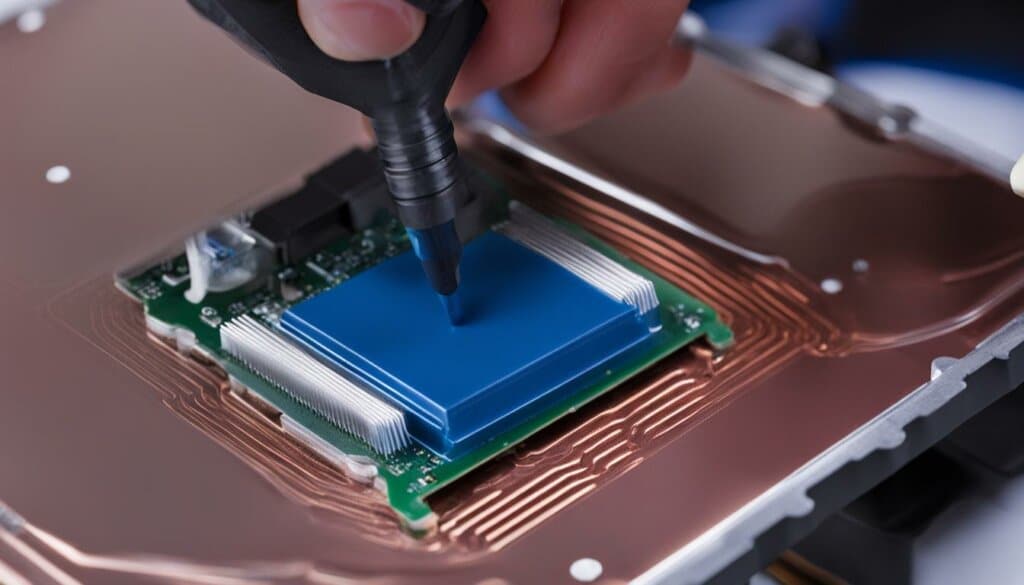
Managing CPU Usage and Updating Software
One of the effective ways to prevent CPU overheating is by managing the usage of your CPU and regularly updating your software. By taking control of CPU usage and keeping your software up to date, you can optimize performance and minimize the risk of overheating.
Close CPU-Intensive Programs
One of the main causes of high CPU usage is running multiple CPU-intensive programs simultaneously. These programs can put a significant load on your CPU, leading to increased temperatures and potential overheating. To manage CPU usage effectively, it is essential to close any unnecessary CPU-intensive programs, especially those running in the background.
You can identify CPU-intensive programs using the Task Manager or Activity Monitor on your computer. Close any applications that are not essential or currently being used to free up CPU resources and reduce the strain on your CPU.
Update Software Regularly
Outdated software, including your operating system, drivers, and other applications, can contribute to CPU overheating. Software updates often include bug fixes, optimizations, and improvements that can enhance CPU performance and efficiency.
Make it a habit to check for updates regularly and install the latest versions of your software. Most operating systems and applications have an automatic update feature that you can enable for seamless updates. This ensures that your computer benefits from the latest enhancements, including CPU performance improvements and bug fixes that could help prevent overheating.
Updating software not only boosts CPU performance but also delivers enhanced security against potential vulnerabilities. It ensures that your computer is running on the latest patches, reducing the risk of malware or other security breaches that could tax your CPU unnecessarily.
Summary:
Managing CPU usage and updating software are integral steps in preventing CPU overheating. By closing CPU-intensive programs and keeping your software up to date, you can optimize CPU usage, improve performance, and minimize the risk of overheating-related issues.
| Benefits of Managing CPU Usage and Updating Software: |
|---|
| 1. Optimizes CPU usage |
| 2. Improves overall performance |
| 3. Reduces the risk of CPU overheating |
| 4. Enhances security against potential vulnerabilities |
Conclusion
To prevent CPU overheating and ensure optimal computer performance, it is crucial to implement various measures for CPU cooling. By improving airflow, checking fans, reapplying thermal paste, managing CPU usage, and updating software, you can effectively safeguard your CPU from overheating and maintain the smooth operation of your computer.
Improving airflow by placing your PC in a well-ventilated area, organizing cables, and cleaning intake and exhaust paths helps dissipate heat and prevent CPU overheating. Additionally, regularly checking fans for dust or debris and ensuring they are properly connected and functioning optimizes CPU cooling.
Reapplying thermal paste, along with checking the CPU heatsink, ensures proper heat transfer and prevents overheating. However, it is advisable to seek assistance from experienced users or professionals for this task. Managing CPU usage by closing CPU-intensive programs and updating software, including the operating system and drivers, further enhances CPU performance while preventing overheating.
Regularly cleaning your PC and monitoring CPU temperatures are essential for catching any signs of overheating in a timely manner. By following these preventive measures, you can protect your CPU, achieve optimal computer performance, and extend the lifespan of your system.
FAQ
What are the signs of CPU overheating and what causes it?
The signs of CPU overheating include a hot computer, loud fan noise, and slowdowns or crashes during high-intensity usage. CPU overheating can be caused by factors such as demanding applications, multiple open browser tabs, defective fans, blocked air vents, outdated software, and direct sunlight.
How can I improve airflow and check the fans to prevent CPU overheating?
Improving airflow is essential to prevent CPU overheating. You can do this by ensuring your PC is located in a well-ventilated area, keeping the case closed, removing any obstructions on top of the case, organizing cables, adding more case fans, and cleaning the intake and exhaust paths. Checking the fans is also important as blocked or faulty fans can contribute to overheating. It’s crucial to clear any dust or debris from the fans and ensure they are properly connected and functioning.
What role does thermal paste and the CPU heatsink play in CPU cooling?
The thermal paste and CPU heatsink play a crucial role in CPU cooling. It’s essential to check the heatsink to ensure it is properly seated and not loose. Additionally, old or dried-up thermal paste can hinder heat dissipation, so reapplying thermal paste can improve CPU cooling. However, this task should only be carried out by experienced users or professionals.
How can I manage CPU usage and update software to prevent CPU overheating?
Managing CPU usage can help prevent overheating. You can close programs with high CPU usage, especially those running in the background or unnecessary applications. Additionally, keeping your software updated with the latest operating system, drivers, and other programs can improve CPU performance and prevent overheating.
How can I prevent CPU overheating and ensure optimal computer performance?
Preventing CPU overheating is essential for maintaining optimal computer performance and prolonging the lifespan of your CPU. By improving airflow, checking fans, reapplying thermal paste, managing CPU usage, and updating software, you can effectively prevent CPU overheating and ensure your computer runs smoothly. Remember to regularly clean your PC and monitor CPU temperatures for any signs of overheating.

